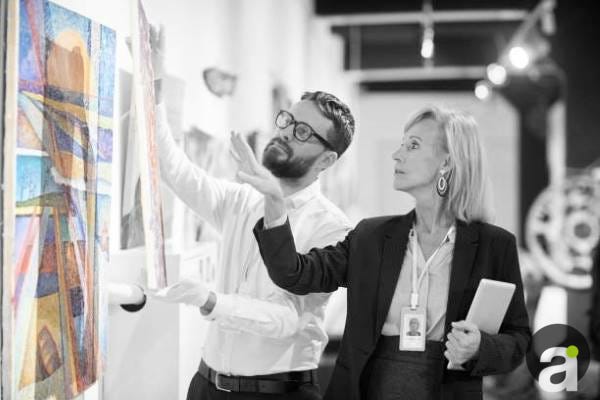Innovative Funding Models for Art Institutes: Strategies to Ensure Financial Sustainability in a Changing Landscape
Art institutes face unprecedented challenges in today’s rapidly evolving cultural and economic climate. Declining public funding, shifting donor priorities, and competition for grants...
Art institutes face unprecedented challenges in today’s rapidly evolving cultural and economic climate. Declining public funding, shifting donor priorities, and competition for grants demand creative solutions to ensure long-term financial stability. This article explores actionable strategies to diversify revenue streams, optimize grant-writing practices, and cultivate meaningful donor relationships. Whether you’re a seasoned arts administrator or a newcomer to the field, these insights will empower you to future-proof your institution while staying true to its mission.
Why Financial Sustainability Matters
Financial sustainability is more than balancing budgets—it’s about safeguarding an institution’s ability to innovate, educate, and inspire. Key reasons to prioritize sustainability include:
Mission Preservation: Stable funding allows institutes to focus on core goals rather than scrambling for short-term fixes.
Adaptability: Diverse revenue streams enable institutions to weather economic downturns and adapt to trends (e.g., digital transformation).
Community Impact: Financial health ensures continued access to underserved audiences through scholarships, free programs, and outreach.
Long-Term Viability: Sustainable models attract talent, retain staff, and build trust with stakeholders.
Sponsored by Art8 - “Webinars for Creatives”
Creative Revenue Streams Beyond Traditional Funding
Relying solely on ticket sales, grants, or government support is no longer viable. Explore these innovative income generators:
1. Membership Programs with Tiered Benefits
What: Offer tiered memberships (e.g., student, patron, corporate) with perks like exclusive access to virtual studio tours, curator talks, or discounts at museum cafes.
Example: The San Francisco Art Collective increased membership renewals by 40% by adding a “VIP Night” for top-tier donors, featuring after-hours gallery access.
2. Corporate Partnerships & Sponsorships
Why: Companies increasingly prioritize ESG (Environmental, Social, Governance) goals and cultural engagement.
How: Partner with local businesses for co-branded exhibitions, sponsor-led workshops, or naming rights for educational programs.
Case Study: The Chicago Arts Institute secured a 3-year partnership with a tech firm to fund digital literacy workshops for students, aligning with the company’s CSR objectives.
3. Digital Monetization
Virtual Exhibitions: Charge for access to immersive online exhibits (e.g., VR tours of archived collections).
Online Courses: Leverage faculty expertise to sell courses on platforms like Teachable or Coursera (e.g., “Art Conservation 101”).
E-Commerce: Sell high-quality prints, artist collaborations, or merchandise tied to exhibitions.
4. Earned Income Strategies
Rent event spaces for weddings, corporate retreats, or photo shoots.
Launch a café or bookstore with locally sourced products.
License archival images or research to publishers, filmmakers, or educators.
5. Crowdfunding Campaigns
Platforms like Kickstarter or Patreon can fund specific projects (e.g., restoring a historic gallery). Highlight storytelling and urgency:
“Help us preserve 200 years of art history—every $50 funds one hour of conservation work!”
Grant-Writing Tips for Success
Grants remain critical but require strategic refinement:
Understand the Funder’s Priorities
Tailor proposals to align with the grantmaker’s mission. For example, emphasize community outreach for foundations focused on equity.
Tell a Story with Data
Combine compelling narratives (e.g., student success stories) with measurable outcomes (e.g., “Our program served 500 underserved youth in 2023”).
Build Relationships with Grant Officers
Schedule pre-submission calls to clarify expectations and demonstrate your institute’s alignment with their goals.
Collaborate for Larger Grants
Partner with other nonprofits or universities to apply for consortium grants, which often have higher funding ceilings.
Diversify Grant Sources
Mix local, national, and international opportunities. Explore niche funders (e.g., grants for feminist art or climate-themed installations).
Pro Tip: A New England Art Institute increased grant success rates by 25% by hiring a part-time grant writer specializing in arts education.
Donor Engagement Tactics for Long-Term Relationships
Donors want to feel connected to your mission. Strengthen loyalty with these strategies:
Personalized Stewardship
Segment donors by interest (e.g., contemporary art vs. historical preservation) and tailor communications. Send handwritten notes or video updates from beneficiaries.
Donor-Centric Events
Host “behind-the-scenes” tours, artist meet-and-greets, or donor-only previews. The Denver Art Hub saw a 30% increase in major gifts after launching a “Collectors’ Circle” dinner series.
Transparency & Impact Reporting
Share exactly how funds are used (e.g., “Your $1,000 donation funded 10 free school field trips”). Use infographics or short videos to illustrate outcomes.
Legacy Giving Programs
Encourage planned giving by offering estate planning workshops or naming opportunities (e.g., endowing a scholarship in a donor’s name).
Peer-to-Peer Fundraising
Empower board members and loyal donors to fundraise on your behalf. Provide toolkits with sample social media posts and email templates.
Common Questions Answered
Q: How do we balance earned income with our nonprofit mission?
A: Ensure revenue-generating activities align with your values (e.g., a café sourcing ingredients from local artists’ co-ops).
Q: What if donors suffer from “giving fatigue”?
A: Focus on deepening relationships with existing donors rather than constant asks. Highlight their impact and offer non-monetary ways to engage.
Q: How can small institutes compete for corporate sponsorships?
A: Pitch hyper-local partnerships (e.g., a neighborhood business sponsoring a community mural project).
Q: Are digital initiatives worth the investment?
A: Yes—online programs can reach global audiences and generate recurring revenue. Track ROI through metrics like course enrollment or virtual ticket sales.
Q: How do we revive lapsed donors?
A: Send a personalized “We miss you” message with updates on programs they previously supported.
Let’s Summarize:
Financial sustainability for art institutes is not a one-size-fits-all endeavor—it requires creativity, adaptability, and a commitment to building relationships. By diversifying revenue streams, refining grant strategies, and fostering donor loyalty, institutions can thrive in an uncertain landscape while amplifying their cultural impact. Start small, experiment boldly, and remember: Every innovative step forward ensures art remains a vital force for generations to come.
Artist Spotlight:
David Roussève: Choreographing Stories From the Heart - UCLA Arts
For choreographer, director, filmmaker, performer, and UCLA Distinguished Professor David Roussève, dance has never been just movement—it’s a way of healing and sharing truth.
Discover the World’s Top Art Institutes at https://artinstitutes.org






